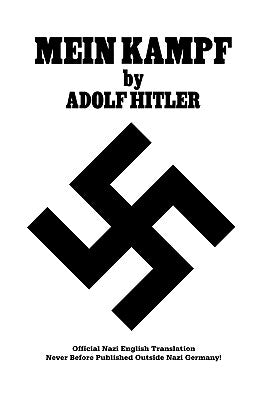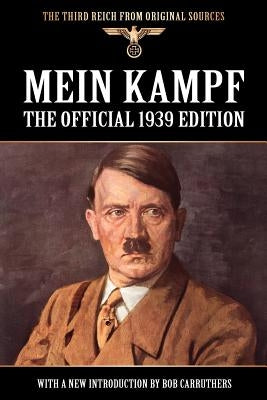Must-Read Works of Postmodern Literature

Postmodern literature is a genre known for its experimental narrative techniques, playful approach to storytelling, and deep interrogation of reality and fiction. For readers keen on exploring this intriguing literary movement, diving into its seminal works offers a profound understanding of its core themes and innovations. This article presents eight must-read works of postmodern literature, each showcasing unique styles and ideas that define the genre.
1. Gravity's Rainbow by Thomas Pynchon
Thomas Pynchon’s Gravity's Rainbow, published in 1973, is often hailed as a cornerstone of postmodern literature. The novel’s intricate plot weaves together themes of paranoia, technology, and power in the aftermath of World War II. Pynchon’s narrative is renowned for its complexity, including its non-linear structure and extensive use of symbolism. The book’s exploration of historical and political issues through a fragmented narrative exemplifies the postmodern penchant for challenging traditional storytelling methods.
2. Infinite Jest by David Foster Wallace
David Foster Wallace’s Infinite Jest, released in 1996, is a sprawling and ambitious novel that embodies the essence of postmodern literature. The book is set in a dystopian future and explores themes of addiction, entertainment, and identity. Wallace’s innovative use of footnotes and digressions adds layers of complexity to the narrative, making it a challenging but rewarding read. The novel’s critique of contemporary society and its deep, interwoven plotlines make it a seminal text in postmodern literature.
3. Slaughterhouse-Five by Kurt Vonnegut
Kurt Vonnegut’s Slaughterhouse-Five, published in 1969, is a landmark in postmodern literature. The novel’s unique structure, which blends science fiction with autobiographical elements, reflects Vonnegut’s anti-war stance and his exploration of free will versus determinism. The story follows Billy Pilgrim, who becomes unstuck in time and experiences different moments of his life, including his time in Dresden during World War II. Vonnegut’s blending of reality and fiction highlights the absurdity of war and the limits of human control.
4. The Crying of Lot 49 by Thomas Pynchon
Another essential work by Thomas Pynchon, The Crying of Lot 49, published in 1966, is a shorter yet equally influential postmodern novel. The book follows Oedipa Maas as she uncovers a secret postal service and a conspiracy that spans across different layers of society. Pynchon’s use of paranoia, cryptic clues, and intertextual references makes this novel a quintessential example of postmodern literature. Its exploration of the search for meaning in a seemingly chaotic world resonates with key themes of the genre.
5. White Teeth by Zadie Smith
Zadie Smith’s debut novel, White Teeth, published in 2000, offers a vibrant portrayal of multicultural London and examines themes of identity, family, and cultural heritage. The novel’s intergenerational narrative and its blending of historical and contemporary elements reflect postmodern concerns with identity and multiculturalism. Smith’s dynamic prose and her exploration of diverse perspectives make White Teeth a significant contribution to postmodern literature.
6. Pale Fire by Vladimir Nabokov
Vladimir Nabokov’s Pale Fire, published in 1962, is a remarkable example of postmodern literary innovation. The novel is presented as a poem with a commentary by a fictional scholar, creating a layered narrative that explores themes of obsession, madness, and the nature of art. Nabokov’s inventive structure and his play with narrative reliability highlight key postmodern concerns with the boundaries between reality and fiction. The novel’s metafictional elements make it a compelling and influential work.
7. House of Leaves by Mark Z. Danielewski
Mark Z. Danielewski’s House of Leaves, published in 2000, is a groundbreaking work in postmodern literature known for its experimental format. The novel features multiple narratives, footnotes, and unconventional page layouts, creating a disorienting and immersive reading experience. The story revolves around a house that is larger on the inside than it is on the outside, leading to a chilling exploration of fear and reality. Danielewski’s innovative approach and his use of metafiction make House of Leaves a standout in the genre.
8. A Clockwork Orange by Anthony Burgess
Anthony Burgess’s A Clockwork Orange, published in 1962, is a provocative and influential work of postmodern literature. The novel’s exploration of free will, violence, and societal control is presented through a distinctive linguistic style and a dystopian narrative. Burgess’s use of a constructed language and his examination of the conflict between individual agency and societal forces make this book a significant postmodern text. Its innovative approach to language and narrative structure exemplifies the genre’s experimental spirit.
Must-Read Works of Postmodern Literature
Postmodern literature is characterized by its innovative narrative techniques, playful deconstruction of traditional forms, and deep exploration of reality and fiction. The eight books listed above represent some of the most influential and essential works in this genre. From Thomas Pynchon’s complex narratives to David Foster Wallace’s sprawling epics, these novels offer a diverse range of styles and themes that define postmodern literature. Whether you are a seasoned reader or new to the genre, these must-read works provide valuable insights into the creative and thought-provoking world of postmodernism.
Explore your favorite book at your own online bookstore.Happy Reading!












